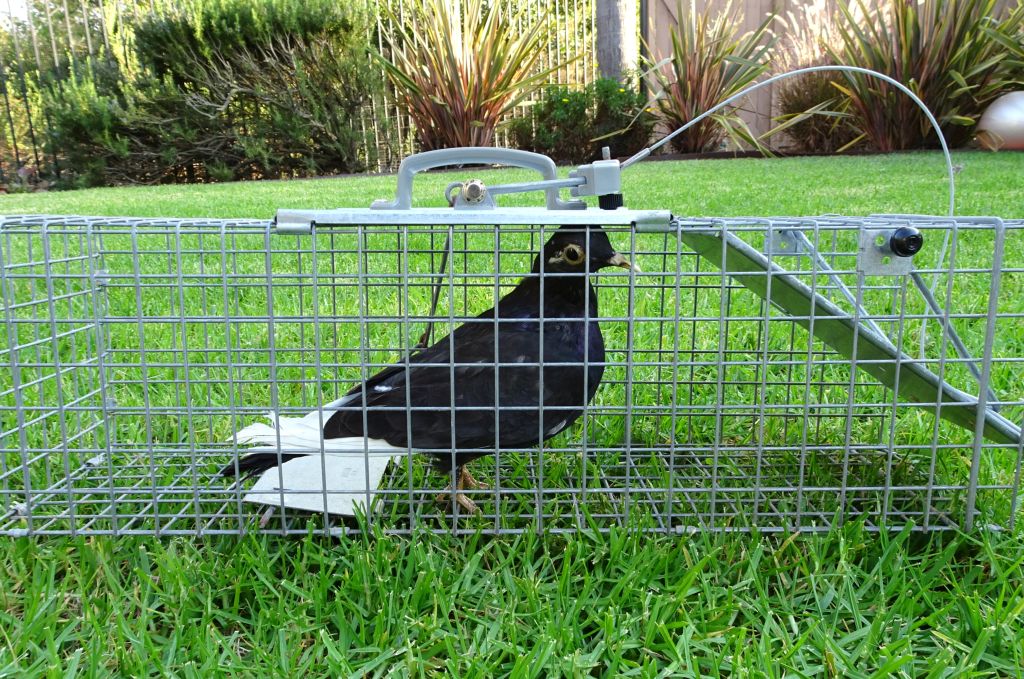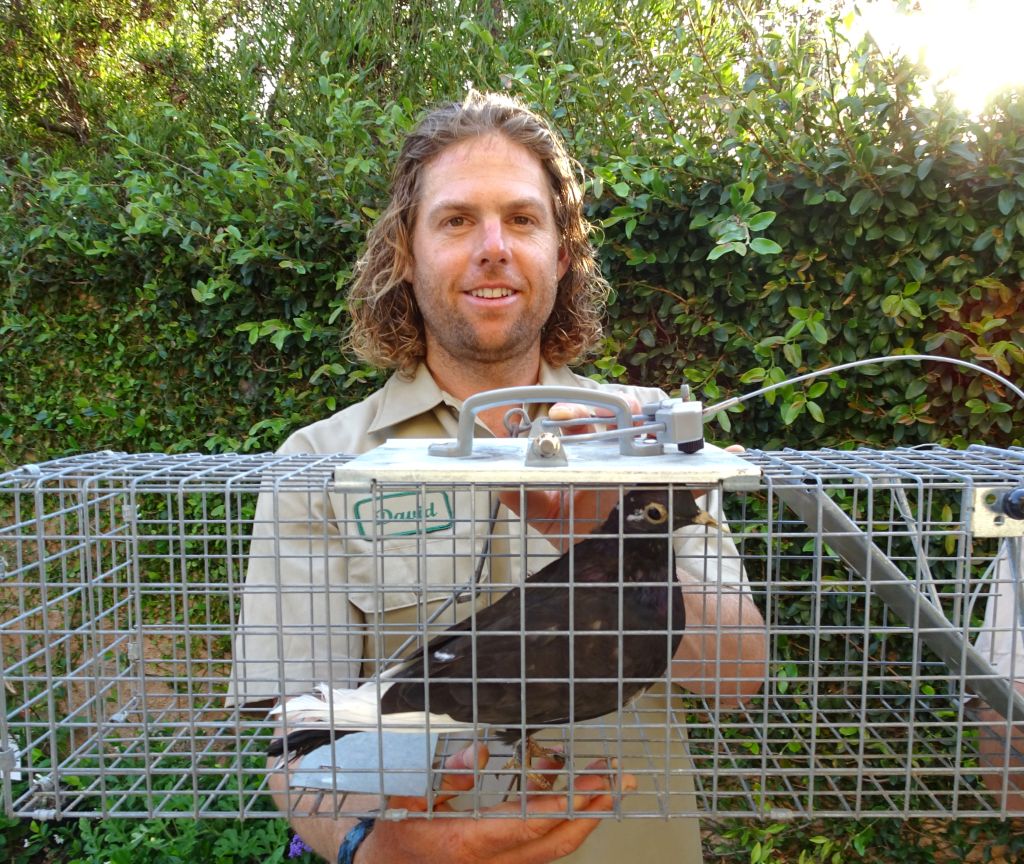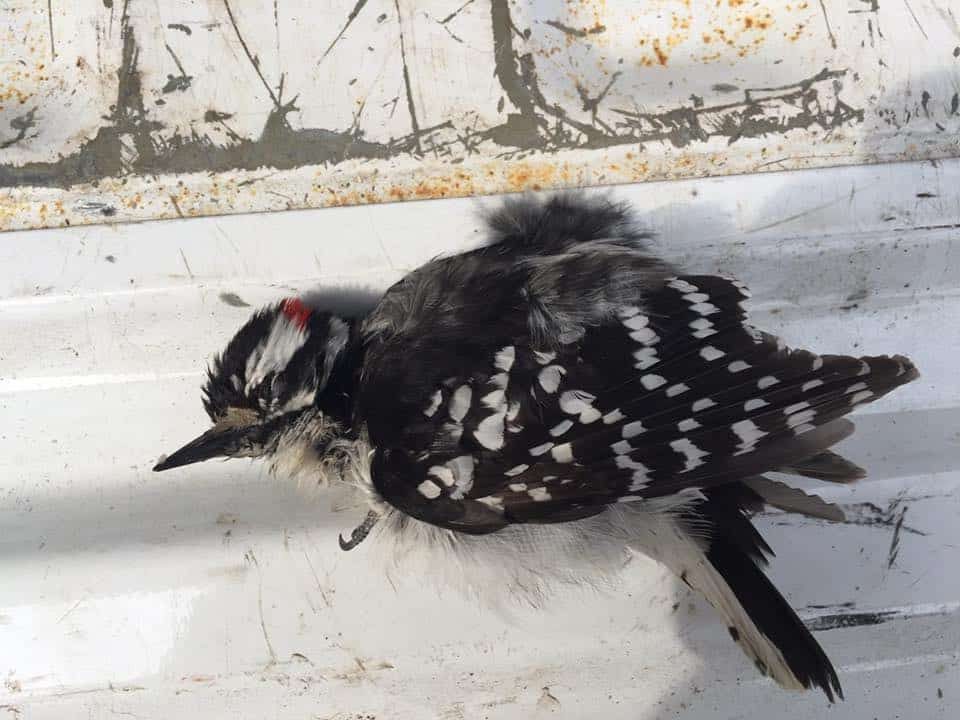Birds are perhaps the most commonly seen wildlife in urban areas. They keep insect numbers down, bring us their birdsong, and are often kept as pets. However, if they start roosting in your home, they can be a problem, doing damage and causing a mess.
Thankfully, there are ways to deal with them, including exclusion methods, repellents, trapping (subject to state law), and hiring bird control experts.
One of the most significant difficulties can be the legalities regarding bird removal and the different methods permitted. Some species are protected, so check with your local state before taking on any DIY bird control.
EXCLUSION

When installing exclusion measures, it’s recommended that you place them anywhere the birds can land, not just the areas they are roosting on currently. Otherwise, they will shift from one ledge to the next unprotected one.
There are a few different products available for deterring birds from roosting on your home:
- Bird spikes – strips of plastic or metal with protruding spikes that make it impossible or uncomfortable for the bird to land on
- Netting – hanging large pieces of netting up along the side of the building to prevent birds from accessing a larger area
- Shock tracks – an electrified wire that shocks any birds attempting to land on it
GETTING A BIRD OUT OF THE ATTIC
Getting birds out of the attic is a task best handled by a professional. It often requires more than just removing the adult birds, as there may be eggs or chicks in the nest. Relocating an active nest isn’t easy, and is even illegal for some migratory bird species.
If you want to try and do it yourself:
- Locate the nest and ensure that it’s empty (if it isn’t, contact professionals; don’t try to remove it yourself).
- Inspect the building to find entry points.
- Place an exclusion door over the main entrance, use mesh, netting, or a more substantial barrier to seal the rest.
- Climb into the attic to remove any empty nests and clean the area thoroughly. Wearing a mask and gloves is highly recommended, especially if the birds have been there a while.
TRAPPING
The trapping of birds is subject to state or even federal laws, depending on the species, as some are protected by the federal migratory bird protection act.
There are a variety of traps available, depending on the size of the bird you’re trying to catch:
- Larsen trap
- Ladder trap
- Net traps
- Sparrow trap
- Starling trap
Bait the trap with birdseed and set it somewhere the birds regularly visit, generally off the ground so that the bird will feel safe from predators.
If you do trap the birds, you need to have a plan for what to do with them: release or euthanize them. Depending on the bird and the state laws, killing the bird could be illegal. If you can kill it, make sure that you do so humanely.

HOW TO GET BIRDS OUT OF THE ROOF?
Troubled by birds nesting upon, or even worse inside your roof? We hear you. While birds may appear like some of the more innocent, harmless wild home invaders, the truth is, they’re not. Aside from causing quite a bit of damage to your property, birds expose you to a host of serious bacteria and diseases, so a bird invasion is definitely not something you should joke around with. Visit probirdcontrol.org to learn more about bird control solutions.
In this article, we look at the things you can do to get birds out of the roof safely and efficiently.
- Call a professional wildlife removal company.
The first and by far the easiest way to rid yourself of any avian problems is, of course, to call a wildlife removal company. They will come prepared with all the necessary protective gear, and know-how to address the issue safely and effectively.
While it may be tempting to try DIY removal, as it saves a few bucks, it may end up being more trouble than it’s worth. So do consider calling a professional wildlife removal company before you try other DIY removal methods (or, of course, if they fail!).
- Try a decoy.
If birds on the roof have become a problem, you might try scaring them off with a special decoy. Specialty stores around the country sell fake bird predators (like owls or hawks) that you can install on a perch nearby. Seeing the potential threat, the birds will be less likely to bother you, so legends say.
On the other hand, this method is not always effective, particularly if you’re dealing with a smarter type of bird (which will be able to detect the deception). Of course, you can actually install a perch and hope to attract a real owl or hawk, which may be a good deterrent for terrestrial wildlife, as well. On the other hand, that might pose its own set of problems.
- Trapping might work.
If you want to get rid of the birds on your roof, the best thing you can do is trapping. Using some bird food as bait, you can lure them inside a live trap, which is a great humane option that won’t actually hurt the bird. However, before you go out and buy a live trap, make sure you do your research, and figure out what you’re going to do with the bird, once captured.
Some states have strict rules about releasing animals into the wild, and you want to make sure you do it right.
- Sound deterrents.
Also at specialty stores, you might find a motion-activated sound deterrent to install on your roof. This is basically a device that emits a high-pitched, annoying noise when it detects motion. Naturally, this will make your roof more inhospitable to the birds, and make it less likely they’ll want to nest there.
On the downside, the noise might also end up bothering you and your neighbors, so make sure you check just how disruptive a sound deterrent is, and consider that, before purchasing one.
- Anti-nesting spikes.
A common misconception about bird spikes is that they’re somehow inhumane, and hurt the birds. But they don’t. These sharp little spikes are designed to deter, not hurt, largely because the bird is smart enough to recognize the danger, and won’t actually try to land on a sharp spike.
Alternatively, you might opt for special bird deterrent gels that feel gooey and sticky to the touch, and so will make your roof inhospitable for the bird. This might be an easier option, and also a more aesthetic choice for some homeowners.

What Is the Best Way to Deter Woodpeckers?
Woodpeckers are a common nuisance across much of the United States. In the simplest terms, woodpeckers cause problems because of their unique habit of jamming their beaks into trees to find food. This can present a serious problem for homeowners, as sometimes woodpeckers will begin damaging their home. That is why it is so important to learn how to deter woodpeckers. Continue reading to learn how you can do it.
What damage do woodpeckers cause?
While the pecking might be annoying, is it really hurting anything? In most cases, woodpeckers pecking on your home can actually be very detrimental to your home. If they do it enough, they could potentially weaken the lumber and other building materials that make up your home. In addition, if a woodpecker were to get through the materials and create a hole leading into your home, this could allow more nuisance animals to get into your home, creating a large problem.
In addition to the problems they cause outside, if they get indoors, they can become a threat. Birds carry many diseases, and woodpeckers are no exception. These can be spread through humans coming into contact with the bird itself, its feathers, or its droppings. These droppings, besides posing a health risk, can also cause damage to your home. Bird droppings cause corrosion of metals, which could weaken the structural integrity of some of your building materials. These are the reasons that it is so important to remove woodpeckers as soon as possible.
- Professional Help
One of the best ways to ensure that you can prevent woodpeckers from damaging your home is to hire a professional wildlife removal company to perform exclusion services. These services can include installing ways to prevent any future woodpecker infestations. Often, these visits will begin with a thorough examination of your home and the situation. From there, a plan of attack could be made, either to remove any existing problem or to prevent a future problem. By taking this step, you will be helping to ensure that you are keeping woodpeckers away.
- Hide the Food
One of the main reasons that woodpeckers ever come near your home is if they know they can find easy access to food. If you notice woodpeckers pecking your home frequently, there may be something very serious happening. Termites, ants, and bees are some of the favorite foods of woodpeckers, so seeing woodpeckers pecking your house often could symbolize an insect infestation. Since having termites in your building materials is very bad, it might be a good idea to have a professional pest control company check it out. In addition to an insect problem, there could be other reasons that a woodpecker wants to be near your house. If you have bird feeders out, leave garbage or pet food out, or have any other open sources of food, woodpeckers could potentially be attracted by them. Hide these food sources and the problem could potentially go away on its own.
- Scare Them
One of the common ways that many people deter woodpeckers is to use a number of varieties to scare the birds away from their property. One of the most common is using a decoy of an owl, coyote, or other predatory animal. Woodpeckers will think twice about being in your yard if they know there is a threat of predation. Another commonly used method is reflective aluminum foil or other reflective metallic strips. The glare from the Sun that these reflect startle many woodpeckers away from your property. If these tactics do not seem to be working, there may be a greater underlying problem with your home that is attracting woodpeckers.
